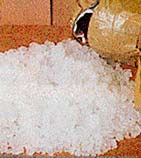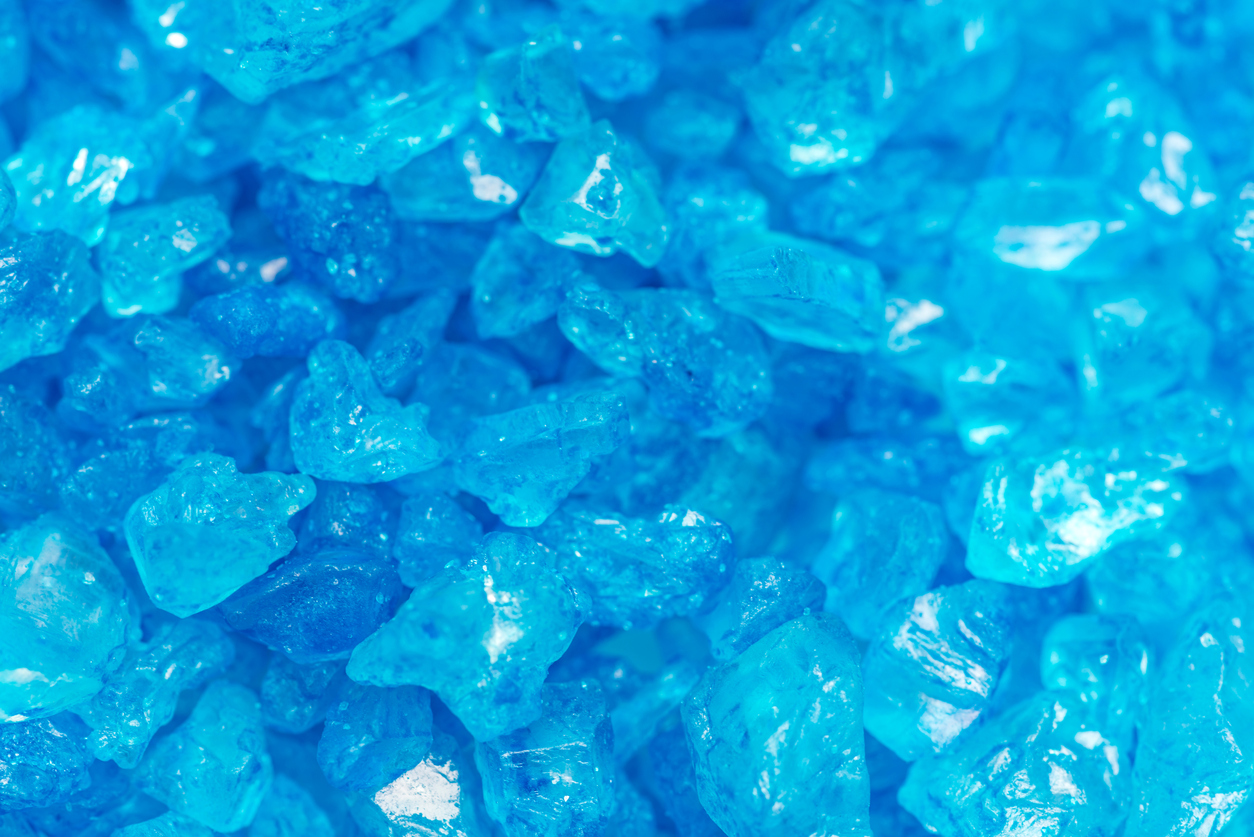 Methamphetamine, or “meth” is an unpredictable, sometimes lethal drug.
Methamphetamine, or “meth” is an unpredictable, sometimes lethal drug.
Meth is also known as speed, ice, and crystal. Like cocaine, meth is a potent central nervous system stimulant. Meth represents the fastest growing drug threat in America today according to the National Institute on Drug Abuse.
Meth can be smoked, snorted, injected, or taken orally, and its appearance varies depending on how it is used. It is usually a white, odorless, bitter-tasting powder that easily dissolves in water. Another common form of the drug is crystal meth, or “ice,” named for its appearance (that of clear, large chunky crystals resembling rock candy). Crystal meth is smoked in a manner similar to crack cocaine and about 10 to 15 “hits” can be obtained from a single gram of the substance. Users have referred to smoking ice as a “cool” smoke, while the smoking of crack is a “hot” smoke. The euphoric effect of smoking ice lasts longer than that of smoking crack.
Some History: First synthesized in 1887, methamphetamine is made from the drug ephedrine, an organic substance used as a medicine in China for hundreds of years. In the 1930s it was sold in the U.S. as a nasal spray for treatment of inflammation of nasal passages (ephedrine still is sold for this purpose) and as treatment for narcolepsy (sudden sleep disorder). During WWII, it was used by both sides to improve soldiers’ performance. This became a major problem in Japan after World War II as they experienced the first known epidemic of methamphetamine abuse. In 1970, the Controlled Substances Act regulated the production of methamphetamine. Today much of the methamphetamine available on the street is illicit and produced in clandestine laboratories in the United States and more recently, Mexico. Because of this, questions always linger about the quality of the drug.
![]()
Side Effects
Methamphetamine use increases the heart rate, blood pressure, body temperature, rate of breathing, and it frequently results in:
- Violent behavior in some users
- Dilates the pupils and produces temporary hyperactivity
- Euphoria
- A sense of increased energy
- Tremors
- Nervousness
- Irritability
- Paranoia
 Withdrawal from high doses produces severe depression. Chronic abuse produces a psychosis similar to schizophrenia and is characterized by paranoia, picking at the skin, self absorption, and auditory and visual hallucinations. Violent and erratic behavior is frequently seen among chronic, high-dose methamphetamine abusers.
Withdrawal from high doses produces severe depression. Chronic abuse produces a psychosis similar to schizophrenia and is characterized by paranoia, picking at the skin, self absorption, and auditory and visual hallucinations. Violent and erratic behavior is frequently seen among chronic, high-dose methamphetamine abusers.
The most dangerous stage of the binge cycle is known as “tweaking”. Typically, during this stage, the abuser has not slept in three to fifteen days and is irritable and paranoid. The “tweaker” has an intense craving for more methamphetamine; however, no dosage will help recreate the euphoric high. This causes frustration and leads to unpredictability and a potential for violence.
![]()
Use & Overall Usage
The 1999 National Household Survey on Drug Abuse estimated that 9.4 million Americans tried methamphetamine in their lifetime. This figure shows a marked increase from the 1994 estimate of 3.8 million. According to the Drug Abuse Warning Network (DAWN), methamphetamine-related emergency department episodes more than tripled between 1991 and 1994, rising from roughly 4,900 to 17,700.
Use Among Teens
The 1999 Monitoring the Future survey asked twelfth graders about the use of crystal methamphetamine and found that use has been rising since 1990, peaking in 1998 before leveling off in 1999. Currently, 4.8 percent of high school seniors used the drug in their lifetime (compared to 2.7 percent in 1990), and 1.9 percent used the drug within the past year (compared to 1.3 percent in 1990).
Availability
Because meth production and trafficking for a period of time were concentrated primarily in the West and Southwest United States, particularly California, Arizona, Utah, and Texas, availability and abuse were high in those areas. Northwest, Midwest, and some portions of the Southeast, particularly Georgia, Tennessee, and the surrounding states. There is also evidence that meth production and availability is beginning to spread to Mid-Atlantic states, such as Virginia, and even as far north as New England. In 1999, meth labs were, for the first time, found in New Jersey, Delaware, and Massachusetts.
Sources
Historically, suppliers of methamphetamine in the United States were gangs and other independent trafficking groups. Although gangs continue to produce meth and control a share of the market, Mexico-based trafficking groups entered the illicit methamphetamine market in 1995 and now dominate the trade. With their ability to obtain wholesale (multi-ton) quantities of precursor chemicals on the international market, their access to already established smuggling and distribution networks, and their control over laboratories capable of large-scale production and distribution of methamphetamine, these criminal groups from Mexico now dominate wholesale meth trafficking in the United States.
Over the past few years, these groups revolutionized the production and distribution of methamphetamine by operating “super labs” that can produce unprecedented quantities of high-purity methamphetamine. Each such lab is capable of producing 10 pounds or more per manufacturing cycle.
The majority of the methamphetamine made and distributed by Mexico-based organizations is produced within the United States, particularly in California and other Western states. Recently, there has been a dramatic increase in the number of methamphetamine laboratories operating in certain states, such as Kansas, Missouri, Oklahoma, and Arkansas. The rise in laboratory seizures in these states does not reflect a concerted effort by major traffickers to shift production from sites in California. Rather, it reflects the increasing effort by local entrepreneurs, who operate on the periphery of the methamphetamine market, to exploit the expanding demand for the drug by producing smaller amounts of the drug in less complex laboratories.
![]()
Trafficking
The primary points of entry into the United States for methamphetamine and amphetamine produced in Mexico are California ports-of-entry, particularly San Ysidro. However, south Texas ports-of-entry, particularly Laredo, are experiencing increased smuggling activity. The most common method of transporting methamphetamine and amphetamine is via cars, with pickup trucks and 4-wheel drive vehicles also being used.
Additional Resources, if you desire:
National Drug Abuse Hotline 1-800-662-HELP (1-800-662-4357)
National Clearinghouse for Alcohol and Drug Information 1-800-729-6686
National Institute on Drug Abuse www.nida.nih.gov
Thank you to the U.S. Department of Justice, Drug Enforcement
Administration for the use of their photo and information.
